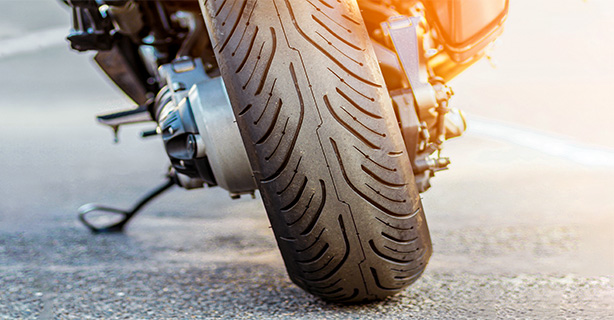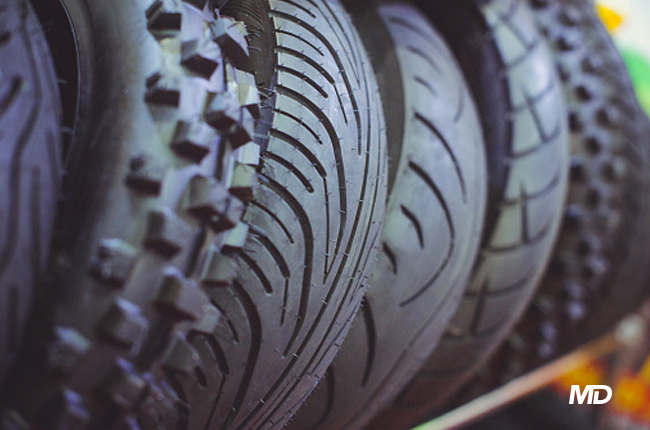Motorcycle Tyre Guide for Performance and Control Advice
Motorcycle Tyre Guide for Performance and Control Advice
Blog Article
Gain Access To Vital Providers Provided in the Field With Our Extensive Motorcycle Tyre Overview for Lovers
The Motorcycle tyre guide supplies vital understandings for lovers looking for to enhance their riding experience. It covers numerous tyre kinds, proper option based on riding designs, and essential maintenance practices. Bikers can benefit from recognizing tyre stress and the importance of recognizing wear indications. With this knowledge, they can navigate possible problems and ensure peak efficiency. However, there are critical aspects of tire care that may continue to be uncertain, prompting more exploration.
Understanding Different Kinds Of Motorcycle Tyres

Exactly how to Pick the Right Tire for Your Riding Style
When selecting the right tire for a specific riding design, riders have to think about numerous elements that line up with their individual choices and the intended use their Motorcycle. Different tyres deal with certain conditions, such as off-road, sporting activity, or touring riding. For experience bikers, dual-sport tyres with a sturdy step pattern are crucial for taking on both paved roads and tough surfaces. Conversely, sportbike fanatics need to opt for efficiency tyres that provide remarkable grasp and faster handling on smooth surfaces.Additionally, climate plays a significant function; cyclists in wet regions may take advantage of tires designed for improved water variation. Cyclists should also take into consideration the tyre size and account, which can influence security and ability to move. Ultimately, selecting the ideal tire entails stabilizing these considerations to enhance safety, performance, and comfort, guaranteeing that each trip meets the biker's expectations and aligns with their distinct style.
Necessary Tire Maintenance Tips for Longevity
Keeping Motorcycle tyres is vital for prolonging their life expectancy and guaranteeing excellent efficiency when traveling. Regularly inspecting tyre stress is vital; under-inflated tyres can result in enhanced wear and compromised handling. Fanatics must also check step deepness, as sufficient tread is essential for grasp and safety.Rotating the tyres regularly helps accomplish also use, especially for those that often ride in varied problems. Furthermore, maintaining tires clean from debris and impurities can avoid wear and tear of the rubber.Another important facet is ensuring that the wheels are appropriately lined up, as imbalance can result in uneven wear. Routine inspections for any type of leaks or international objects installed in the tyres are suggested, as early discovery can avoid further damage. Finally, storing the Motorcycle in a climate-controlled atmosphere can protect against rubber deterioration, ensuring the tyres continue to be in prime condition for longer.
Identifying Signs of Tyre Use and Damages
Recognizing indicators of tire wear and damage is vital for every single Motorcycle fanatic. Walk depth indications supply necessary details about the remaining hold, while sidewall splits can signify much deeper architectural issues (motorcycle tyre guide). Recognizing these elements helps ensure both safety and efficiency when traveling
Walk Depth Indicators
Walk deepness indicators act as vital signals for Motorcycle fanatics to assess tire wear and damage. These markings, typically found within the walk grooves, provide an aesthetic reference for the continuing to be step deepness. As tyres use down, the step depth lessens, affecting grip and handling. Enthusiasts are urged to routinely inspect these signs to establish when substitute is essential. A tread depth of 1.6 mm is normally thought about the legal minimum; nevertheless, numerous riders prefer to replace tyres quicker for perfect performance and safety and security. Monitoring walk deepness not only ensures a smoother experience but also boosts total safety and security when driving. Recognizing these indications can considerably prolong the life of a motorcycle's tires and enhance riding experience.
Sidewall Cracks Evaluation
Tire use manifests in different types, and sidewall splits are amongst the most worrying signs of damage that enthusiasts should keep track of closely. These cracks can occur due to factors such as UV direct exposure, improper inflation, and age. They may look like tiny crevices or larger wounds along the tire's sidewall, jeopardizing architectural honesty. Lovers should frequently examine their tyres, particularly after long trips or direct exposure to severe problems. Ignoring sidewall fractures can lead to tragic tyre failing, leading to loss of control while riding. It view it now is recommended to get in touch with an expert for assessment and prospective replacement if any type of splits are found. Aggressive monitoring content guarantees safety and lengthens the life expectancy of Motorcycle tyres, maintaining peak efficiency when driving
On-the-Road Tyre Fixing Techniques
When a cyclist comes across a flat tyre when traveling, swift and reliable repair work strategies can make all the distinction in recovering wheelchair. First, reviewing the damages is important; if the puncture lies on the tread and is no larger than a quarter-inch, a fixing might be feasible. Cyclists must have a tire repair work set that normally consists of plug devices, rubber plugs, and sealant.To perform a repair work, the cyclist should remove any kind of particles from the leak and insert a plug making use of the consisted of tools. Correct sealing can stop air loss and permit the rider to continue their trip. Additionally, utilizing a mobile air compressor can help inflate the tyre to a proper pressure.If the damages is more substantial, short-lived solutions may include requiring roadside help. Understanding these on-the-road fixing techniques gives cyclists with confidence throughout unforeseen tire problems.
The Importance of Tyre Pressure and Its Impact on Performance
Tyre stress plays an important duty in Motorcycle efficiency, affecting handling and safety. Preserving optimal pressure degrees ensures better contact with the roadway, boosting security during rides. On the other hand, incorrect tyre stress can bring about decreased managing capabilities and increased endure tyres.
Optimal Stress Degrees
Keeping optimal pressure degrees is vital for guaranteeing a bike's performance and safety and security. Tire pressure straight influences gas efficiency, stopping distance, and general experience convenience. Over-inflated tires can lead to reduced call with the road surface area, compromising grip, while under-inflated tires might cause too much wear and raise the danger of blowouts. Producers normally advise particular stress levels that vary based on the Motorcycle type and load problems. Normal checks, ideally soon adventures, help cyclists maintain optimum pressure. Utilizing a reliable scale warranties accuracy, as small inconsistencies can significantly influence efficiency. By sticking to advised stress degrees, motorcyclists can boost their riding experience, guaranteeing both pleasure and security when traveling.
Impacts on Managing
Usually neglected, the accurate maintenance of tire pressure plays an important function in Motorcycle handling and performance. Proper tire pressure warranties excellent contact with the roadway surface area, enhancing hold and stability throughout acceleration, stopping, and cornering. Under-inflated tires can lead to raised rolling resistance, influencing gas effectiveness and response times, while over-inflated tyres may lower the get in touch with patch, compromising grip. Furthermore, inaccurate pressure can result in irregular tire wear, decreasing total lifespan. Riders might experience reduced control and raised risk of accidents because of these elements. Routinely checking and readjusting tyre stress according to manufacturer specs not only boosts handling however also adds to a more secure riding experience, assuring that the Motorcycle carries out at its finest under numerous conditions.
When to Look For Professional Assistance for Tire Issues
When should a motorbike lover think about seeking expert support for tire problems? There are numerous circumstances that warrant the know-how of a specialist. First, if the tire shows visible damage such as cuts, protrudes, or slits, immediate inspection is essential. Second, unusual wear patterns, which might suggest placement or suspension issues, ought to motivate examination. In addition, if the tyre stress frequently rises and fall, this may signify a leak or various other problems calling for professional intervention.Moreover, here fanatics might not possess the required devices or expertise for tasks such as tire mounting, balancing, or repairs. In instances of persistent vibrations or taking care of issues, an expert's assessment can help guarantee safety and performance. When in uncertainty, seeking specialist aid is always suggested, as riding on compromised tyres can lead to unsafe situations. Prioritizing safety and security and efficiency is important for any type of Motorcycle fanatic.
Frequently Asked Questions
How Commonly Should I Change My Motorcycle Tyres?
The regularity of Motorcycle tire substitute depends upon variables such as mileage, step wear, and riding problems. Usually, tires need to be changed every 5,000 to 10,000 miles, or earlier if substantial wear is apparent.

Can I Mix Different Tyre Brands on My Motorcycle?
Blending different tyre brand names on a motorcycle is normally not recommended (motorcycle tyre guide). Variants in style, tread patterns, and compounds can affect managing and security, potentially jeopardizing safety and security. It is best to use matching tires for peak efficiency
What Is the Perfect Tyre Pressure for My Bike?
The suitable tire stress for a bike differs by design and riding problems. Generally, suppliers advise checking the owner's manual, making sure optimum efficiency, safety and security, and tire longevity. Regular upkeep is important for maintaining proper pressure.
Are There Specific Tyres for Various Weather Issues?
Different weather demand details tire types. As an example, damp problems gain from tires with much deeper footsteps for far better hold, while summer season tires improve performance in completely dry weather. Picking suitably ensures safety and security and optimal handling throughout the year.
Exactly how Do I Correctly Store Motorcycle Tyres When Not Being Used?
Correct storage of Motorcycle tyres entails keeping them in a cool, completely dry area far from direct sunshine. They should be kept upright or stacked, guaranteeing they remain free and tidy from hefty things that might cause distortion. Experience tires link the gap between off-road and on-road abilities, supplying versatility for bikers that discover diverse environments.Additionally, cruiser tires highlight a smooth ride and stability, customized for heavier bikes. On a regular basis examining tyre stress is crucial; under-inflated tires can lead to increased wear and jeopardized handling. Over-inflated tires can lead to reduced contact with the roadway surface, compromising traction, while under-inflated tires might cause too much wear and boost the risk of blowouts. In addition, if the tire stress regularly fluctuates, this may signify a leak or other difficulties needing specialist intervention.Moreover, fanatics may not possess the required devices or competence for jobs such as tire mounting, balancing, or repairs. Damp problems profit from tires with deeper treads for better grip, while summer tyres enhance performance in dry weather.
Report this page